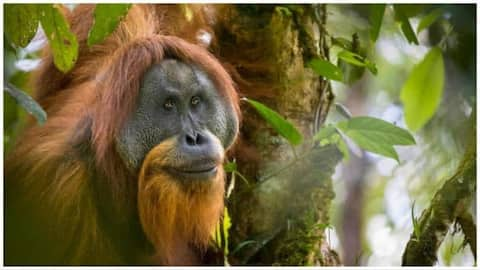Wildlife Day 2025: Endangered species we need to protect
What's the story
Celebrated every year on March 3, World Wildlife Day is a global initiative to celebrate the planet's rich flora and fauna.
According to the United Nations, the day is a reminder of "the urgent need to step up the fight against wildlife crime and human-induced reduction of species."
The event also sheds light on the far-reaching economic, environmental and social consequences of species extinction.
Critical conservation
Spotlight on the most endangered species
On World Wildlife Day 2025, we bring attention to the world's most endangered species.
The Javan rhinoceros, whose population is limited to a mere 75 individuals, is only found on Indonesia's Java island. Their numbers have decreased due to hunting and habitat loss.
The Amur leopard population, mostly found in Russia and China, is around 100 but appears to be gradually stabilizing.
Endangered species
Threats to Sumatran tigers and mountain gorillas
Native to Indonesia's Sumatra, Sumatran tigers are also on the verge of extinction with a population of merely 600.
The growth of human populations has caused their habitats to shrink, putting their survival at risk.
Mountain gorillas, who live in the mountainous regions of Congo, Rwanda, and Uganda, also face serious threats due to political instability and poverty. Their population is just over 1,000.
Deforestation impact
Tapanuli orangutan: The most endangered great ape
Native to Sumatra, the Tapanuli orangutan is the most endangered great ape species in the world.
With less than 800 individuals left, their existence is critically threatened.
Large-scale deforestation in Sumatra remains a major hurdle for the survival of the critically endangered species.
Climate change impact
Vaquita: The world's rarest marine mammal
The vaquita, a small porpoise native to Mexico's Gulf of California, is the world's rarest marine mammal, with fewer than 20 individuals remaining.
Illegal fishing practices, particularly the use of gillnets to catch totoaba fish, have led to their alarming decline.
Conservationists warn that without immediate intervention, the vaquita may become extinct within the next decade.
Despite conservation efforts, their numbers continue to dwindle due to habitat destruction and accidental entanglement in fishing gear.
